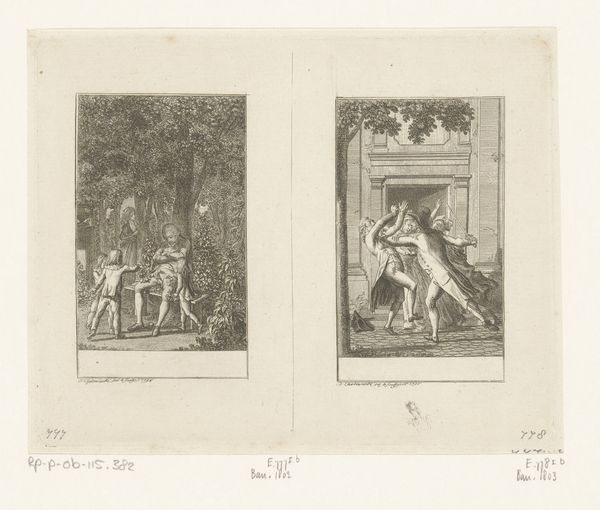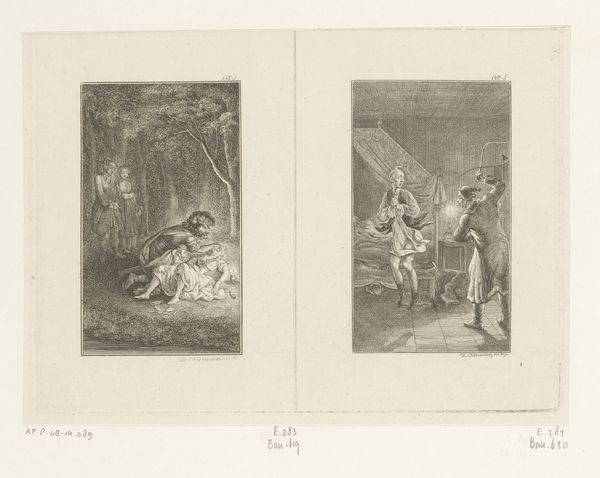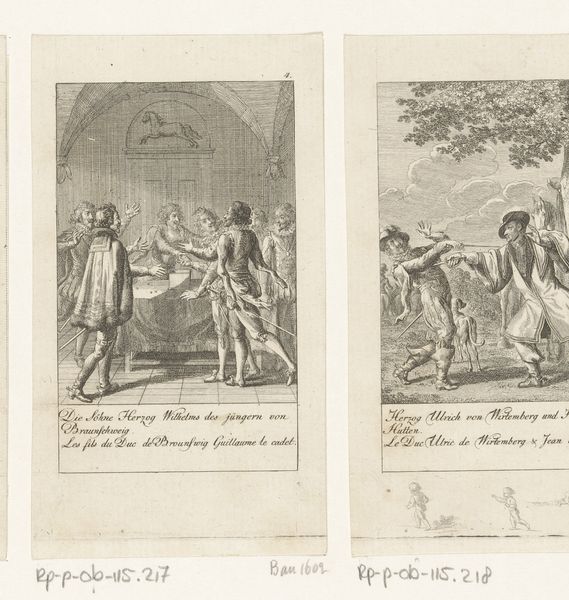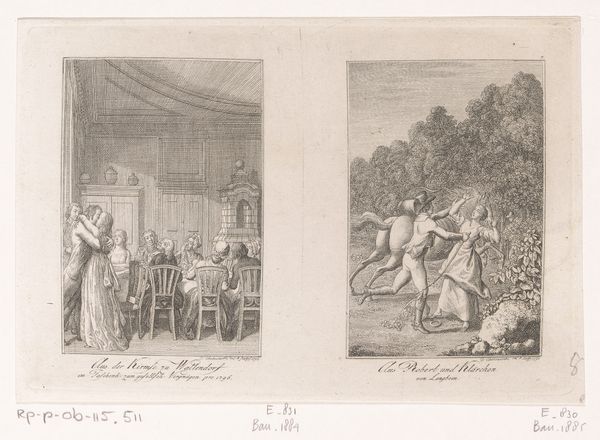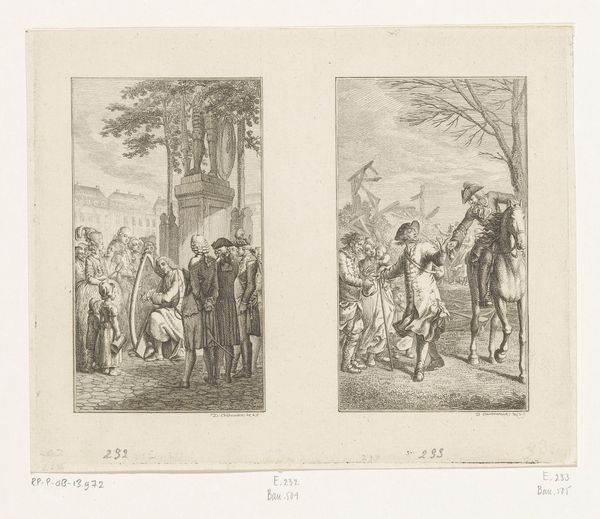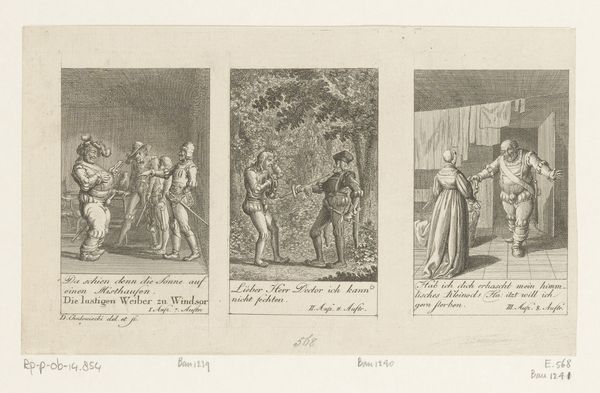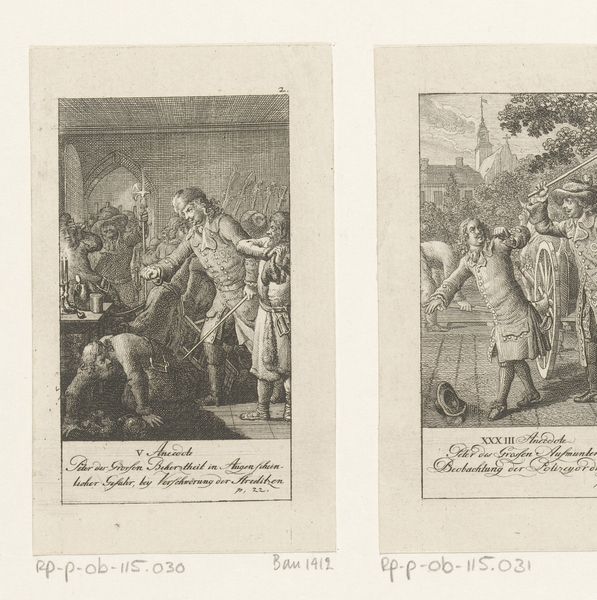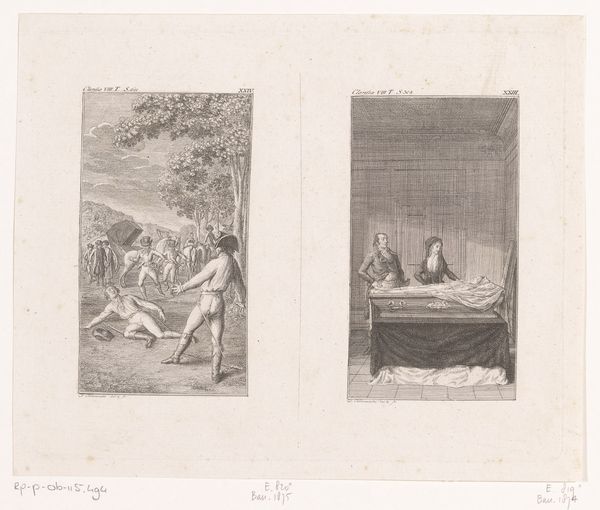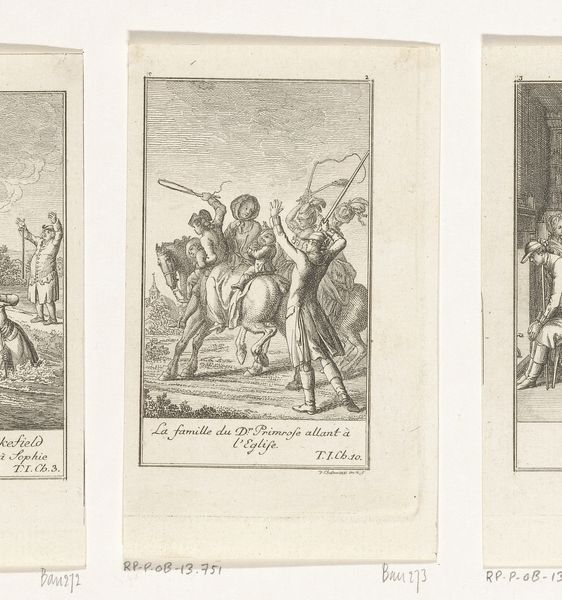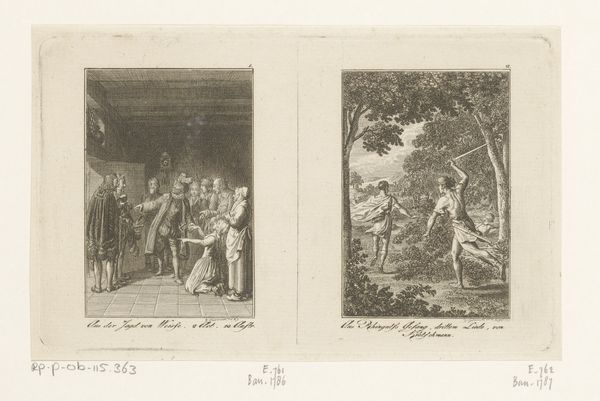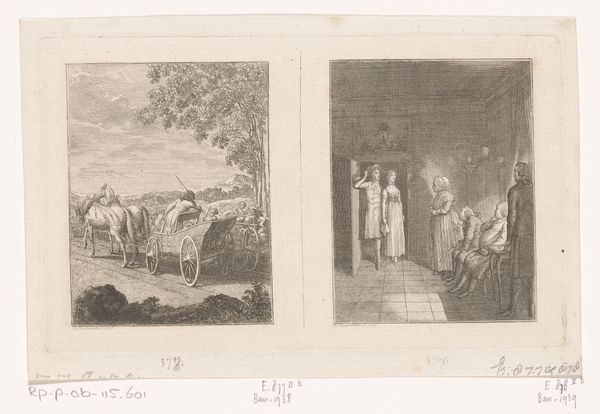
Vier voorstellingen uit de geschiedenis van de Bartholomeusnacht 1797
0:00
0:00
graphic-art, print, etching, engraving
#
graphic-art
#
narrative-art
# print
#
etching
#
romanticism
#
history-painting
#
engraving
Dimensions: height 117 mm, width 276 mm
Copyright: Rijks Museum: Open Domain
Curator: This detailed print, created by Daniel Nikolaus Chodowiecki in 1797, is titled "Four Scenes from the St. Bartholomew's Day Massacre." It is held in the Rijksmuseum. Editor: A chilling title! At first glance, these vignettes feel almost quaint with their Romantic style, but they rapidly shift to somber. Curator: Chodowiecki employed engraving and etching techniques, quite popular in disseminating narratives at the time, especially historical subjects presented from a moral standpoint. What grabs my attention is how these scenes condense the complex events into easily digestible visuals, influencing collective memory. Editor: Indeed. Each of these panels serves almost as a symbolic distillation of that brutal event. Note how the stark light and shadow emphasize the drama, pushing figures forward while the city fades into background – like a stage set where the actors reveal themselves Curator: And each panel holds distinct weight. The first screams bloodshed with men on horseback. It really sets the emotional tone, using recognisable tropes and dramatic flair of Romanticism for what would have been immediate, resonant viewing, feeding popular imagination about these infamous events. Editor: The visual symbols are striking - in the second frame we see a scene in a palace where individuals cower over a person getting attacked; we have a victim lying on a horse, while in the final panel there is tension where one person gestures toward another within in a nature landscape Curator: Let’s remember Chodowiecki's socio-political environment when viewing this. Remember, this print appears more than two centuries after the actual Massacre. We, therefore, can interpret Chodowiecki's printmaking through prisms of popular history, and cultural interpretations. Editor: It seems like the choice of print as a medium underscores its wider intention— to comment, record, and participate in a public discourse and ongoing dialogue related to these events Curator: Agreed. Reflecting on Chodowiecki's "Four Scenes," I find it offers insight into the way symbols function. We not only witness history being relayed, but also its cultural impact being visualised for future viewers. Editor: I am particularly struck by how art allows an atrocity to linger in the public consciousness, serving as both historical documentation and a reminder of the precarious nature of human existence and historical discourse.
Comments
No comments
Be the first to comment and join the conversation on the ultimate creative platform.
